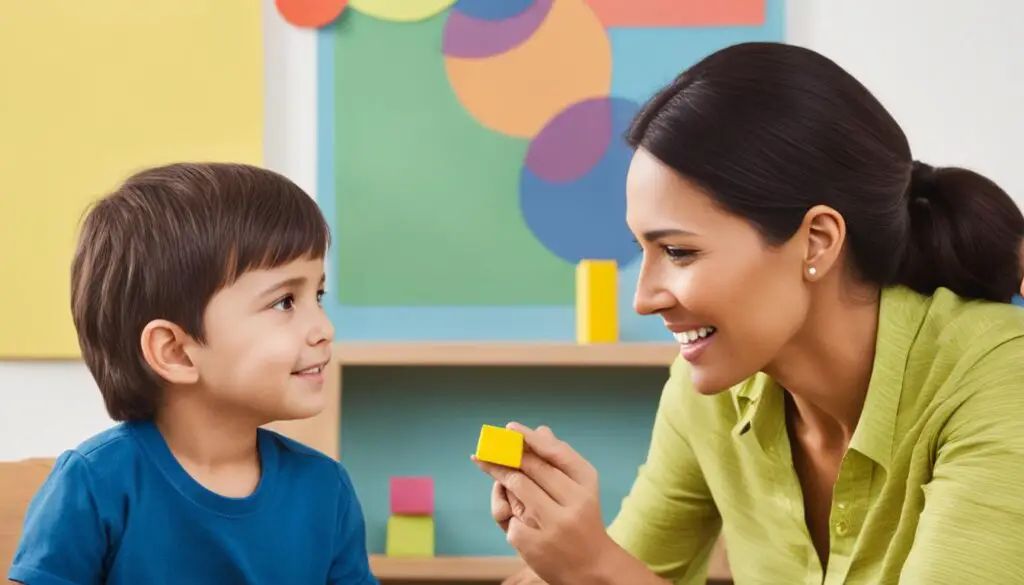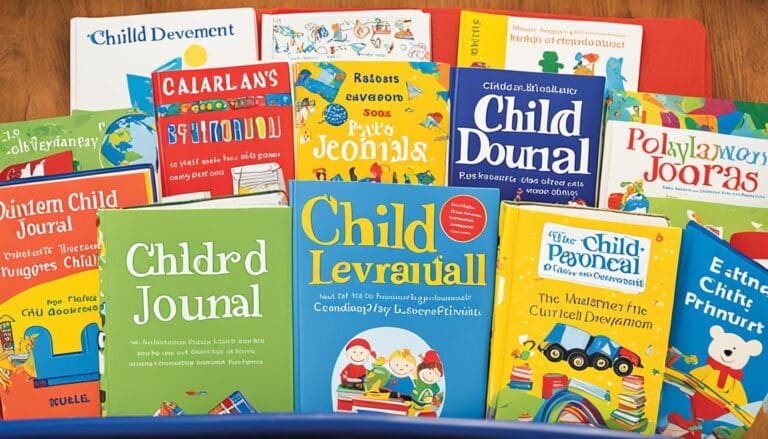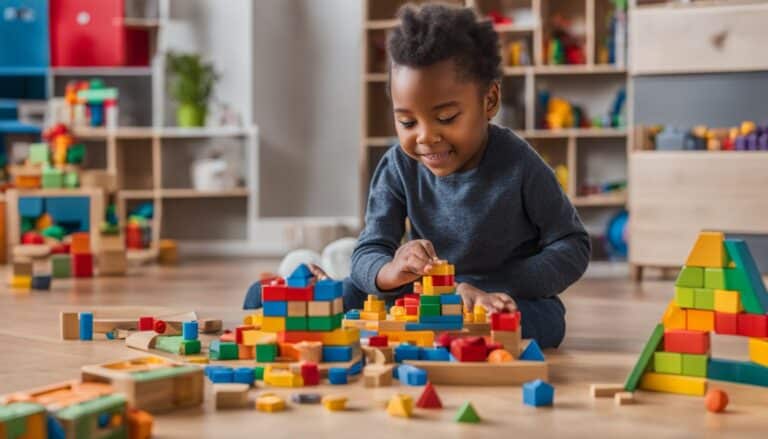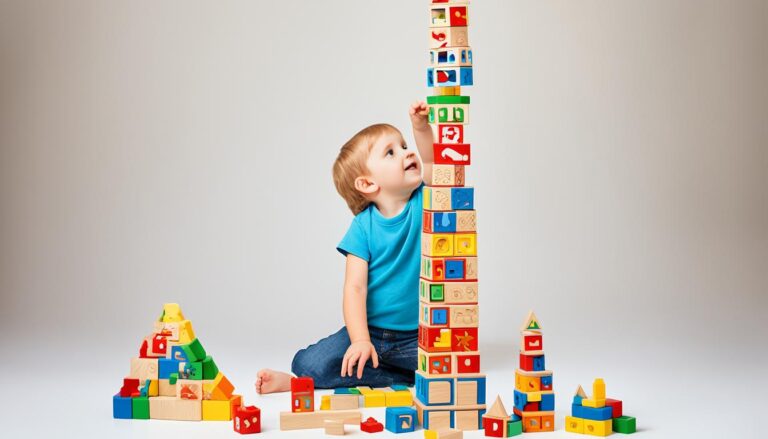Effective Discipline Techniques for Positive Child Development
As a parent, one of the most important aspects of raising a child is instilling good behavior and values. This can be achieved through effective discipline techniques that not only promote positive behavior but also foster healthy child development.
In this article, I will explore the importance of using effective discipline techniques and provide strategies for parents to implement in their daily routine.
Key Takeaways
- Effective discipline techniques promote positive child development.
- Clear expectations and boundaries are crucial for maintaining discipline.
- Positive reinforcement and reward systems can enhance the effectiveness of discipline techniques.
- Effective communication and active listening play a vital role in discipline.
- By implementing effective discipline techniques, parents can provide their children with tools to become responsible individuals.
Understanding the Importance of Effective Discipline
Before we dive into the techniques, it’s crucial to understand the importance of effective discipline for promoting positive child development.
Firstly, appropriate discipline strategies create a safe and secure environment for children to learn and grow. Without clear boundaries, children may feel unsure of what is expected of them, leading to anxiety and stress.
Secondly, using effective discipline techniques promotes respect and self-control in children. By reinforcing positive behavior, we teach children that their actions have consequences, and that taking responsibility for their actions is an essential life skill.
Thirdly, discipline techniques that prioritize communication and positive reinforcement also teach children healthy problem-solving skills. When faced with challenging situations, children are empowered to think critically and find constructive solutions.
By understanding the importance of effective discipline, parents can provide their children with a strong foundation for success and wellbeing. Through positive reinforcement, clear expectations, and open communication, we can help our children grow into responsible, empathetic, and resilient individuals.
Setting Clear Expectations and Boundaries
As a parent, setting clear expectations and boundaries is crucial in creating an effective discipline strategy. Consistent rules and guidelines can help establish a sense of structure and stability for your child. They also provide a framework for behavior expectations, allowing your child to understand what is acceptable and what is not.
Clear expectations refer to setting goals and standards for your child’s behavior. These can include rules around safety, respect, and responsibility. By providing your child with a clear understanding of what is expected of them, you can empower them to take responsibility for their actions.
Boundaries refer to limits around a particular behavior or activity. This could be a curfew time, a household chore routine, or guidelines around screen time. Boundaries help your child develop a sense of responsibility and self-control, while also ensuring that they are aware of the consequences of their actions.
When setting expectations and boundaries, it’s important to provide clear explanations for each rule. This can help your child understand the reasoning behind the rules and guidelines, fostering a sense of trust and respect between parent and child.
To ensure consistency, consider creating a contract with your child that outlines the rules and consequences. This can be a helpful tool in keeping everyone accountable and on the same page.
The Importance of Consistency
Consistency is key when it comes to creating effective discipline strategies. By consistently enforcing the rules and boundaries you’ve established, you can help your child develop a sense of accountability and responsibility. Inconsistency can lead to confusion and frustration for your child, hindering their development.
| Consistency Benefits | Inconsistency Challenges |
|---|---|
| Clear expectations | Confusion |
| Improved behavior | Resentment |
| Established trust | Friction between parent and child |
Positive Reinforcement and Reward Systems
Positive reinforcement is one of the most effective techniques for behavior modification, especially in children. It is based on the idea that good behavior can be encouraged through positive consequences. Rewards are one way to provide positive reinforcement and to promote consistent good behavior in children.
Creating an effective reward system for your child is crucial to positively reinforce good behavior. It can be as simple as earning a sticker for completing chores or getting good grades. Additionally, a reward chart could be designed and displayed in a common area of the house so the child could visually track their progress. A sheet of paper with “stars,” “smiley faces,” or “thumbs up” could also serve the same purpose for younger children. It is important to note that the rewards must be specific and meaningful to your child in order to be motivating.
When establishing a reward system, it is important to be consistent and provide the rewards immediately after the good behavior occurs. Delaying the reward may lead to confusion and a reduced motivation to continue the good behavior in the future.
Remember, positive reinforcement and effective reward systems can improve your child’s self-esteem and encourage them to repeat good behavior. It is an excellent tool in nurturing your child’s development.
Examples of Rewards:
| Rewards | Description |
|---|---|
| Extra Screen Time | For every completed homework or chore task, a set amount of extra screen time is rewarded. |
| Picking a Fun Activity | After accumulating a certain number of stickers, the child gets to pick a fun activity such as going to a movie or a fun outing with family and friends. |
| Favorite Meal | After completing all chores or homework, the child can choose their favorite meal to be cooked for dinner. |

Effective Communication and Active Listening
Communication is key in discipline, and effective communication requires active listening. As a parent, it’s important to listen to your child and try to understand their perspective. This helps to build trust and fosters a sense of partnership in the discipline process.
One helpful strategy is to use “I” statements when discussing behavior. For example, instead of saying “you always interrupt me”, try saying “I feel frustrated when I’m interrupted.” This helps to avoid placing blame and allows for open communication.
Another effective method is to encourage your child to express their feelings and thoughts. Allow them to speak without interrupting and make an effort to understand their point of view. This helps to validate their feelings and builds a stronger relationship between parent and child.
When discussing rules and consequences, take the time to explain your reasoning and the impact on others. This helps your child to understand why certain behaviors are unacceptable and reinforces the importance of respectful behavior.
By practicing effective communication and active listening, parents can promote a healthy and positive relationship with their child, leading to a more successful discipline process.

“Good communication is as stimulating as black coffee and just as hard to sleep after.”
– Anne Morrow Lindbergh
Conclusion
In conclusion, as a professional copywriting journalist, I strongly recommend implementing effective discipline techniques to promote positive child development. By understanding the importance of discipline and setting clear expectations and boundaries, parents can lay the foundation for their child’s growth and development. Utilizing positive reinforcement and reward systems can greatly enhance the effectiveness of discipline techniques, while effective communication and active listening can foster open and honest relationships with children.
It’s important to remember that discipline should always be approached with respect and empathy for the child, and that it is a process that requires consistency and patience. By incorporating these techniques into their parenting style, parents can provide their children with the necessary tools to navigate challenges and become responsible, well-rounded individuals. I hope that this article has provided valuable insights into effective discipline techniques for positive child development.
FAQ
What are effective discipline techniques for positive child development?
Effective discipline techniques for positive child development include setting clear expectations and boundaries, utilizing positive reinforcement and reward systems, practicing effective communication and active listening.
Why is effective discipline important for child development?
Effective discipline is important for child development as it helps foster respect, self-control, and problem-solving skills in children. It contributes to their overall well-being and prepares them for adulthood.
How do I set clear expectations and boundaries for my child?
Setting clear expectations and boundaries for your child involves establishing consistent rules and guidelines, providing explanations for them, and reinforcing them through consistent enforcement.
How can I use positive reinforcement and reward systems effectively?
Positive reinforcement can be used effectively by acknowledging and praising good behavior, providing rewards for desired actions, and creating a reward system that motivates your child to maintain positive behavior.
What role does effective communication and active listening play in discipline?
Effective communication and active listening play a crucial role in discipline as they help build a strong parent-child relationship, encourage open and honest communication, and allow children to express their feelings and thoughts.






